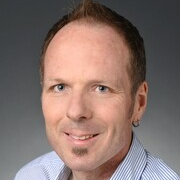Scalp and Hair Health
A special issue of Cosmetics (ISSN 2079-9284).
Deadline for manuscript submissions: closed (30 September 2022) | Viewed by 7346
Special Issue Editors
Interests: skin aging; photo-aging; pigmentation; skin hydration; skin inflammation; hair aging; cosmetics
Special Issues, Collections and Topics in MDPI journals
Interests: hair aging; hair loss; hair pigmentation; inflammatory hair disorders; inflammatory skin disorders; skin aging; skin pigmentation
Special Issue Information
Dear Colleagues,
Healthy hair is one of the most prominent and best visible signs of health, youth and attractiveness in human beings. Weathered hair, hair loss and hair greying are hallmarks of aging. Therefore, people go to great lengths to beautify their hair and delay the effects of time.
Hair problems can lead to psychological distress and low self-esteem. A healthy scalp accompanies healthy hair. Scalp issues range from an oily and itchy scalp to seborrheic conditions such as dandruff. Hair and scalp conditions may arise from various stimuli causing any kind of stress. Examples are environmental impacts such as solar irradiation, air pollution and nutrition, and changes in neuroendocrine status, but also from mechanical impacts such as blow drying, iron flattening or coloring and bleaching hair. On the molecular level, these stimuli may lead to oxidative stress or inflammation, compromised scalp-barrier strength and damaged hair fibers.
The science on hair follicles and scalp skin has focused on deciphering the complex and tightly orchestrated molecular pathways regulating hair and scalp health. Further research could help us to better understand the mechanisms behind a healthy scalp and healthy hair, and pave the way for the better treatment of unwanted scalp and hair conditions.
Therefore, I, together with my co-editors, invite you to submit a manuscript on your recent research in the field or a review article for this Special Issue “Scalp and Hair Health” in the journal Cosmetics (MDPI publisher). Based on your previous published work and your expertise in the field, we are sure you will make an excellent contribution to this Special Issue.
Dr. Remo Campiche
Dr. Marta Bertolini
Dr. Emmanuel Martin
Guest Editors
Manuscript Submission Information
Manuscripts should be submitted online at www.mdpi.com by registering and logging in to this website. Once you are registered, click here to go to the submission form. Manuscripts can be submitted until the deadline. All submissions that pass pre-check are peer-reviewed. Accepted papers will be published continuously in the journal (as soon as accepted) and will be listed together on the special issue website. Research articles, review articles as well as short communications are invited. For planned papers, a title and short abstract (about 100 words) can be sent to the Editorial Office for announcement on this website.
Submitted manuscripts should not have been published previously, nor be under consideration for publication elsewhere (except conference proceedings papers). All manuscripts are thoroughly refereed through a single-blind peer-review process. A guide for authors and other relevant information for submission of manuscripts is available on the Instructions for Authors page. Cosmetics is an international peer-reviewed open access semimonthly journal published by MDPI.
Please visit the Instructions for Authors page before submitting a manuscript. The Article Processing Charge (APC) for publication in this open access journal is 1800 CHF (Swiss Francs). Submitted papers should be well formatted and use good English. Authors may use MDPI's English editing service prior to publication or during author revisions.
Keywords
- Hair follicle
- Hair fiber
- Scalp
- Hair growth
- Hair greying
- Hair health
- Hair appearance
- Hair texture
- Hair mechanical properties
- Dandruff







